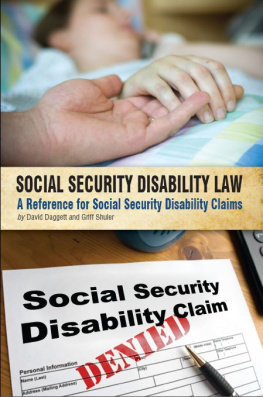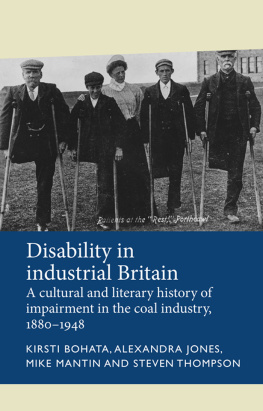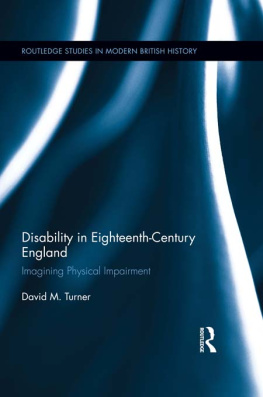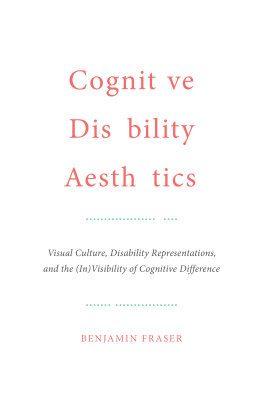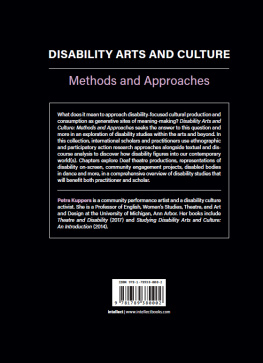Normality and Disability
Hotly contested, normality remains a powerful, complex category in contemporary law and culture. What is little realized are the ways in which disability underpins and shapes the operation of norms and the power dynamics of normalization.
This pioneering collection explores the place of law in political, social, scientific and biomedical developments relating to disability and other categories of abnormality. The contributors show how law produces cultural meanings, norms, representations, artefacts and expressions of disability, abnormality and normality, as well as how law responds to and is constituted by cultures of disability. The collection traverses a range of contemporary legal and political issues including human rights, mercy killing, reproductive technologies, hate crime, policing, immigration and disability housing. It also explores the impact and ongoing legacies of historical practices such as eugenics and deinstitutionalization.
Of interest to a wide range of scholars working on normality and law, the book also creates an opening for critical scholars and activists engaged with other marginalized and denigrated categories, notably contesting institutional violence in the context of settler colonialism, neoliberalism and imperialism, to engage more richly and politically with disability.
This book was originally published as a special issue of Continuum: Journal of Media & Cultural Studies.
Gerard Goggin is Professor of Media and Communications and ARC Future Fellow at the University of Sydney, Australia. He has published widely on the social and cultural dynamics of disability, including Disability in Australia (2005) and Digital Disability (2003) (both with Christopher Newell), Disability and the Media (2015, with Katie Ellis), Routledge Companion to Disability and Media (2018, with Katie Ellis and Beth Haller) and Listening to Disability: Voices of Democracy (2018, with Cate Thill and Rosemary Kayess).
Linda Steele is a Senior Lecturer in Law at the University of Technology Sydney, Australia. Her research explores the intersections of disability, law and injustice. She has published in journals across law, criminology and, gender and cultural studies.
Jessica Robyn Cadwallader is an independent scholar with an abiding interest in corporeal differences and its significance in contemporary culture, especially medical and legal cultures. Her doctoral thesis focused on experiences of suffering and how these are bound up with medical solutions of normalization, while her postdoctoral project explored therapeutic forgetting, a response to trauma. Her work has been published in numerous international journals, including Social Semiotics, Australian Feminist Studies, International Journal of Feminist Approaches to Bioethics and Somatechnics.
Normality and Disability
Intersections among Norms, Law, and Culture
Edited by
Gerard Goggin, Linda Steele and Jessica Robyn Cadwallader
First published 2018
by Routledge
2 Park Square, Milton Park, Abingdon, Oxon, OX14 4RN, UK
and by Routledge
711 Third Avenue, New York, NY 10017, USA
Routledge is an imprint of the Taylor & Francis Group, an informa business
2018 Taylor & Francis
All rights reserved. No part of this book may be reprinted or reproduced or utilised in any form or by any electronic, mechanical, or other means, now known or hereafter invented, including photocopying and recording, or in any information storage or retrieval system, without permission in writing from the publishers.
Trademark notice: Product or corporate names may be trademarks or registered trademarks, and are used only for identification and explanation without intent to infringe.
British Library Cataloguing in Publication Data
A catalogue record for this book is available from the British Library
ISBN 13: 978-1-138-30248-8
Typeset in Myriad Pro
by RefineCatch Limited, Bungay, Suffolk
Publishers Note
The publisher accepts responsibility for any inconsistencies that may have arisen during the conversion of this book from journal articles to book chapters, namely the possible inclusion of journal terminology.
Disclaimer
Every effort has been made to contact copyright holders for their permission to reprint material in this book. The publishers would be grateful to hear from any copyright holder who is not here acknowledged and will undertake to rectify any errors or omissions in future editions of this book.
Contents
Citation Information
The chapters in this book were originally published in Continuum: Journal of Media & Cultural Studies, volume 31, issue 3 (June 2017). When citing this material, please use the original page numbering for each article, as follows:
Introduction
Normality and disability: intersections among norms, law, and culture
Gerard Goggin, Linda Steele and Jessica Robyn Cadwallader
Continuum: Journal of Media & Cultural Studies, volume 31, issue 3 (June 2017), pp. 337340
Chapter 1
Fit or fitting in: deciding against normal when reproducing the future
Roxanne Mykitiuk and Isabel Karpin
Continuum: Journal of Media & Cultural Studies, volume 31, issue 3 (June 2017), pp. 341351
Chapter 2
Eccentricity: the case for undermining legal categories of disability and normalcy
Karen OConnell
Continuum: Journal of Media & Cultural Studies, volume 31, issue 3 (June 2017), pp. 352364
Chapter 3
Eugenics and the normal body: the role of visual images and intelligence testing in framing the treatment of people with disabilities in the early twentieth century
Elizabeth Stephens and Peter Cryle
Continuum: Journal of Media & Cultural Studies, volume 31, issue 3 (June 2017), pp. 365376
Chapter 4
The construction of access: the eugenic precedent of the Americans with Disabilities Act
Stephanie K. Wheeler
Continuum: Journal of Media & Cultural Studies, volume 31, issue 3 (June 2017), pp. 377387
Chapter 5
Disability and torture: exception, epistemology and black sites
Dinesh Wadiwel
Continuum: Journal of Media & Cultural Studies, volume 31, issue 3 (June 2017), pp. 388399
Chapter 6
Mental capacity and states of exception: revisiting disability law with Giorgio Agamben
Penelope Weller
Continuum: Journal of Media & Cultural Studies, volume 31, issue 3 (June 2017), pp. 400410
Chapter 7
Not just language: an analysis of discursive constructions of disability in sentencing remarks
Frankie Sullivan
Continuum: Journal of Media & Cultural Studies, volume 31, issue 3 (June 2017), pp. 411421
Chapter 8
Policing normalcy: sexual violence against women offenders with disability
Linda Steele
Continuum: Journal of Media & Cultural Studies, volume 31, issue 3 (June 2017), pp. 422435
Chapter 9
The government is the cause of the disease and we are stuck with the symptoms: deinstitutionalisation, mental health advocacy and police shootings in 1990s Victoria


